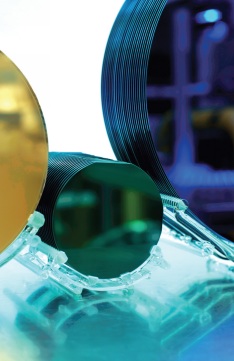Honors Microelectronics

In 1947 at AT&T Bell Laboratories in Murray Hills, N.J., three scientists, John Bardeen, Walter Brattain, and William Shockley, invented the bipolar junction transistor, eventually winning the Nobel Prize for their work.
Eleven years later, in 1958, Jack Kilby of Texas Instruments created the first integrated circuit, which is comprised of more than one device built on the same substrate. Bob Noyce of Fairchild Semiconductor followed this up with a patent on an integrated circuit based on a planar process. In 1965, Gordon Moore, also of Fairchild, predicted that the number of devices on a chip would double every two years by making them smaller. Today devices are built with billions of transistors on a single chip!
You can find integrated circuits everywhere. From computers, cell phones, televisions and radios to watches, cameras, refrigerators, ovens, and automobiles, integrated circuits have invaded almost every aspect of modern day society, and play roles in obvious arenas such as entertainment and productivity, but also play an important part in safety, research, education, communication, agriculture, transportation, medicine, and more!
Objectives
- Describe the characteristics of a semiconductor.
- Qualitatively describe the operation of diodes and FET transistors.
- Develop vocabulary needed to converse in the semiconductor and nanotechnology industries.
- Explain how transistors may be connected to create simple logic gates.
- Utilize basic logic gates to build simple digital logic devices such as a half adder.
- Describe the basic process steps in integrated circuit fabrication.

